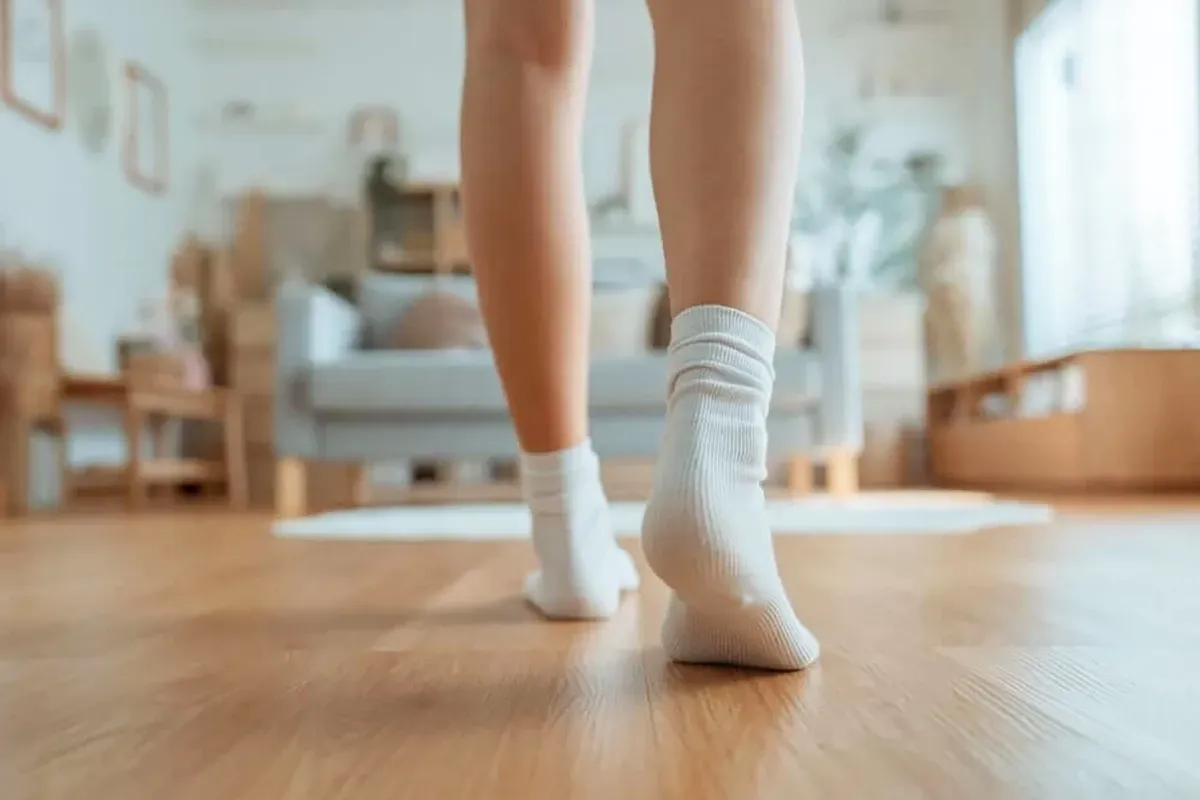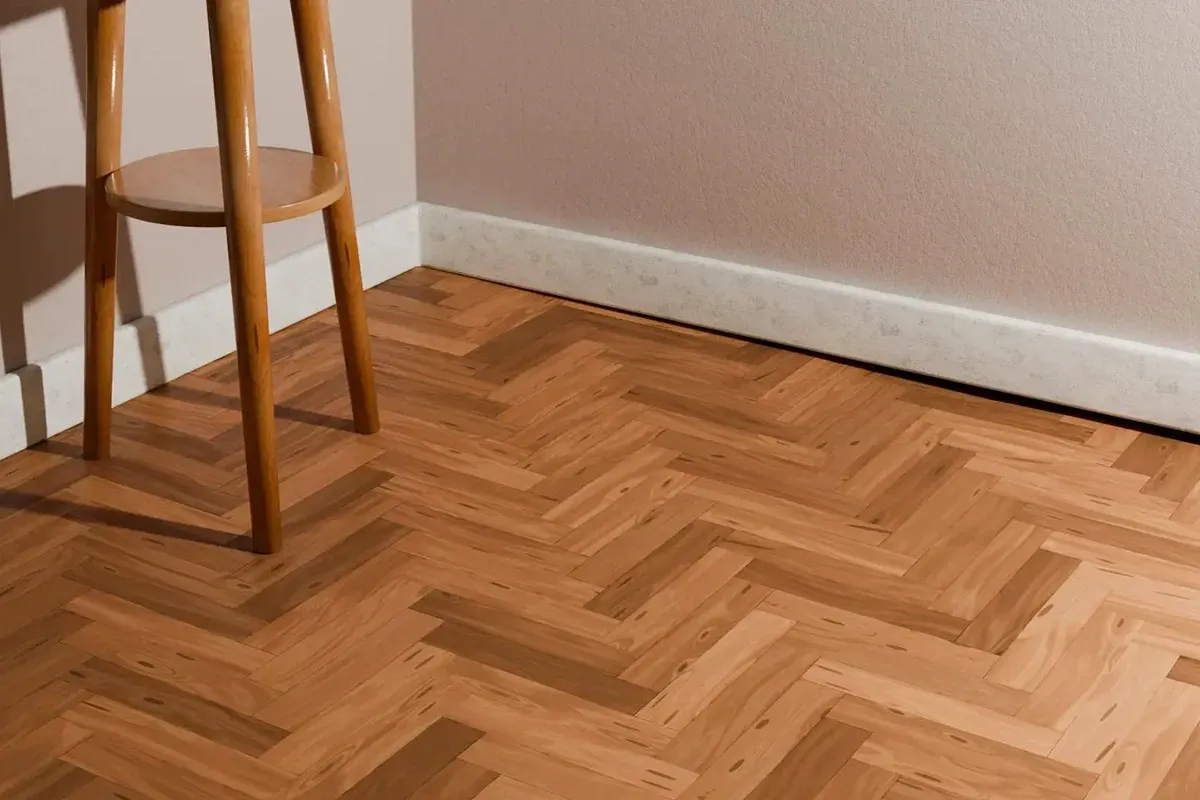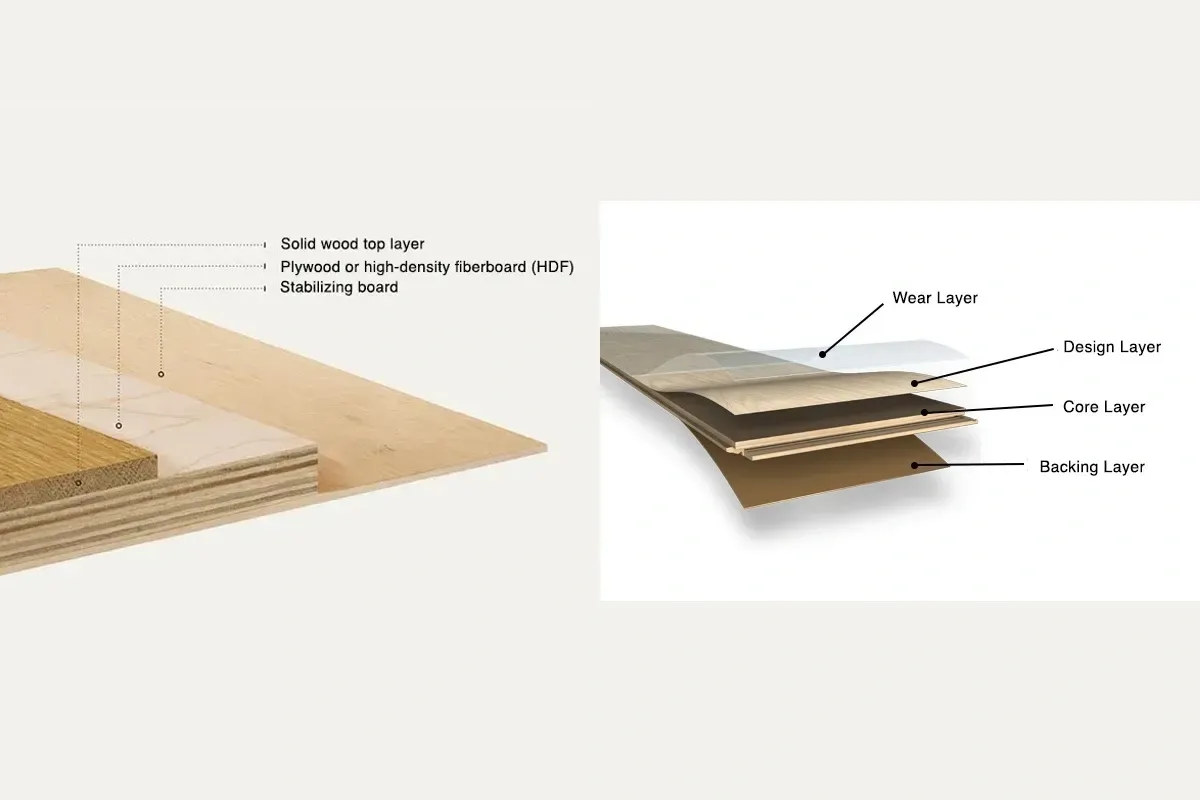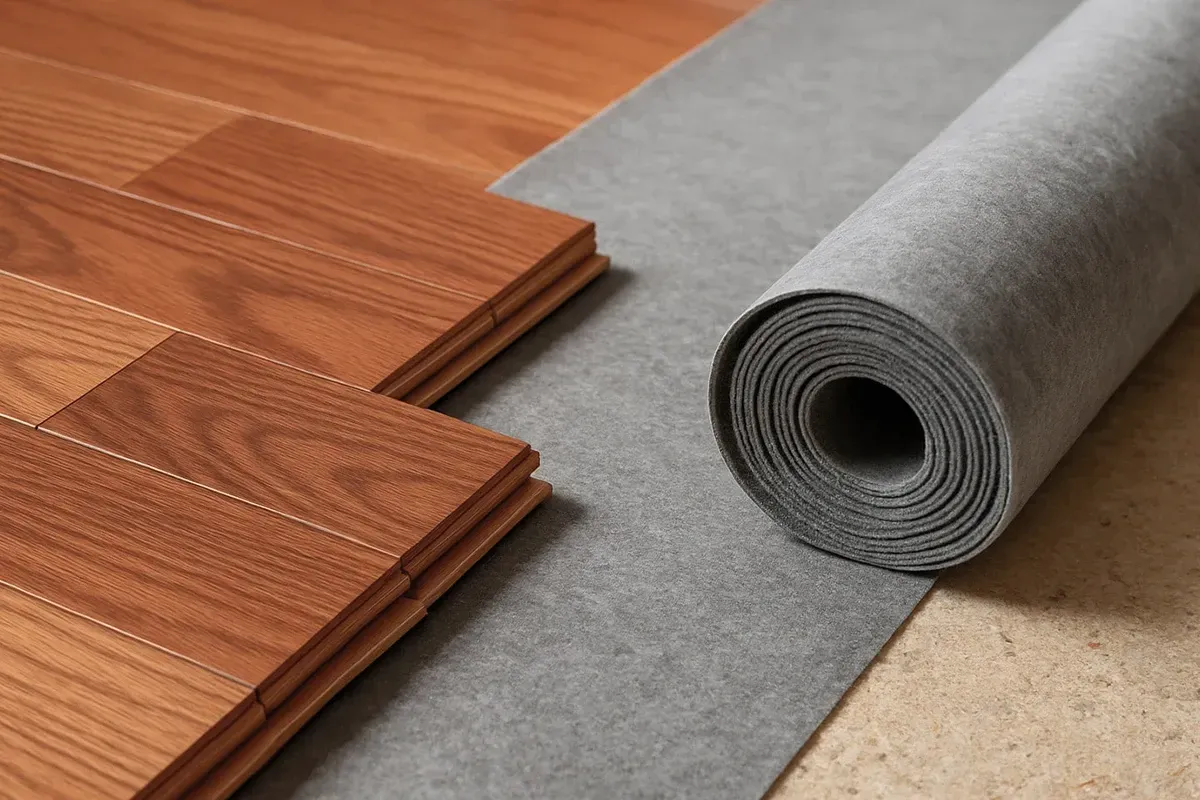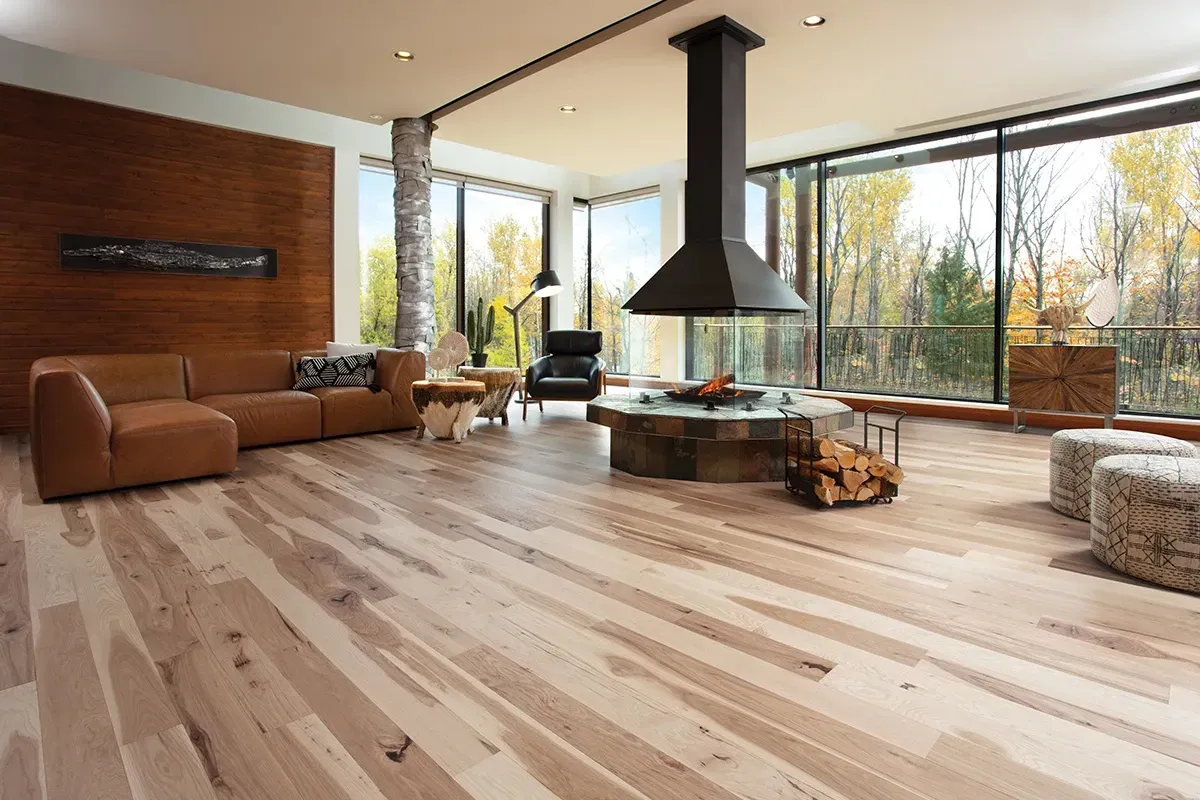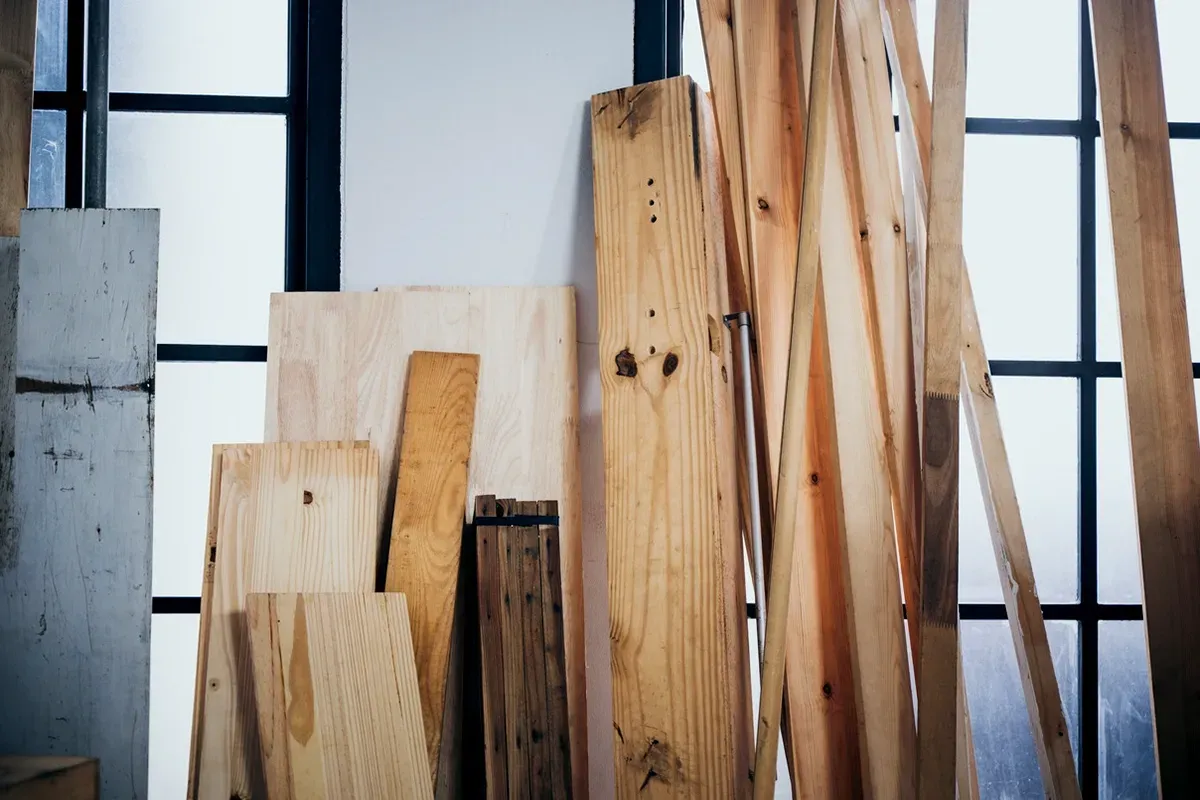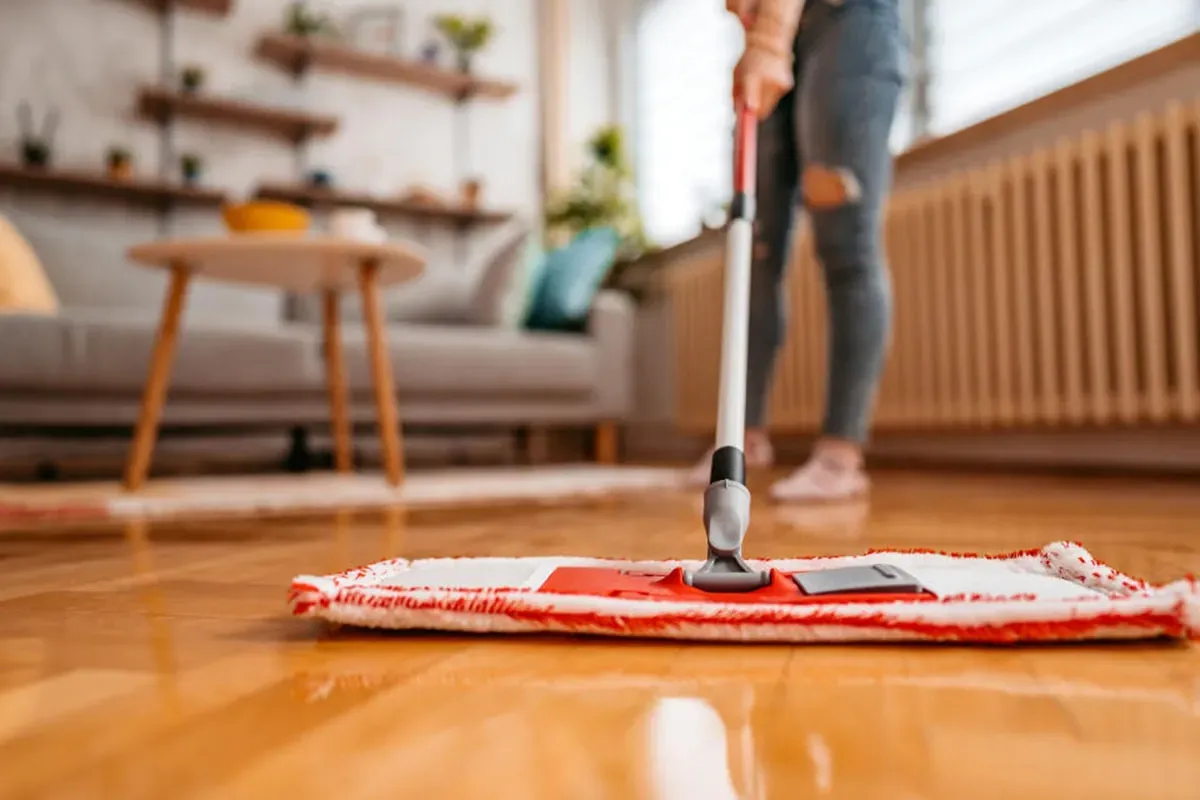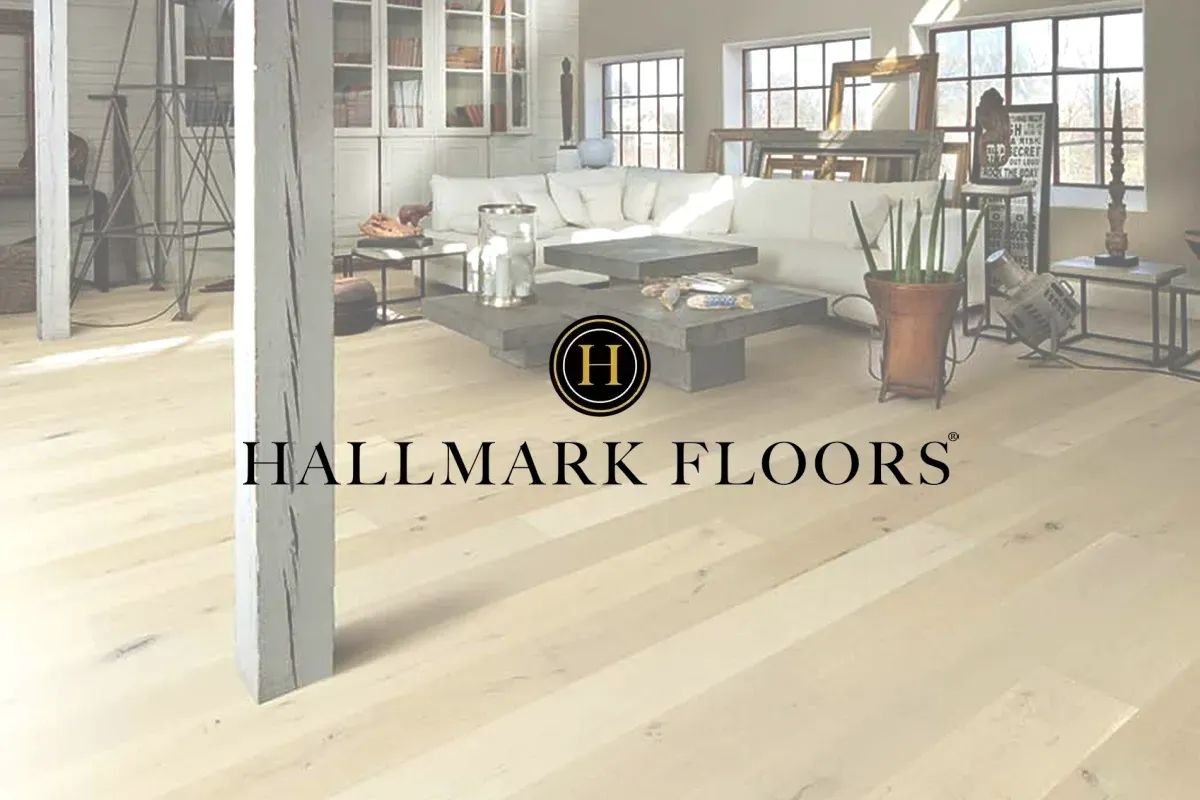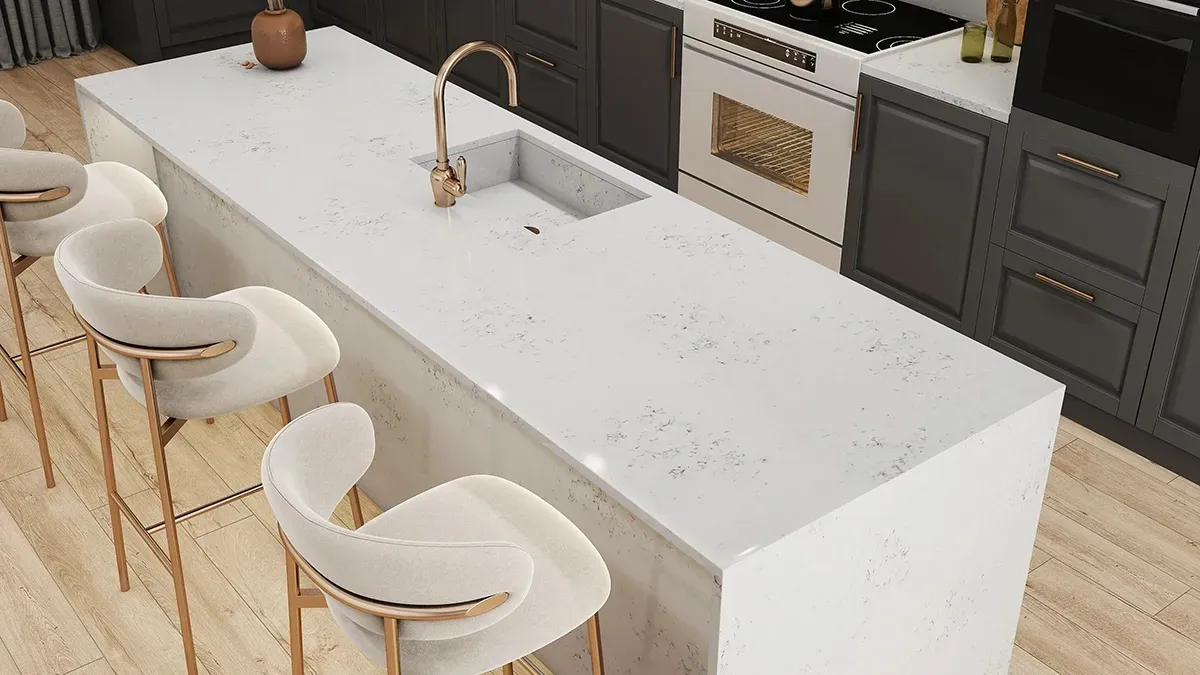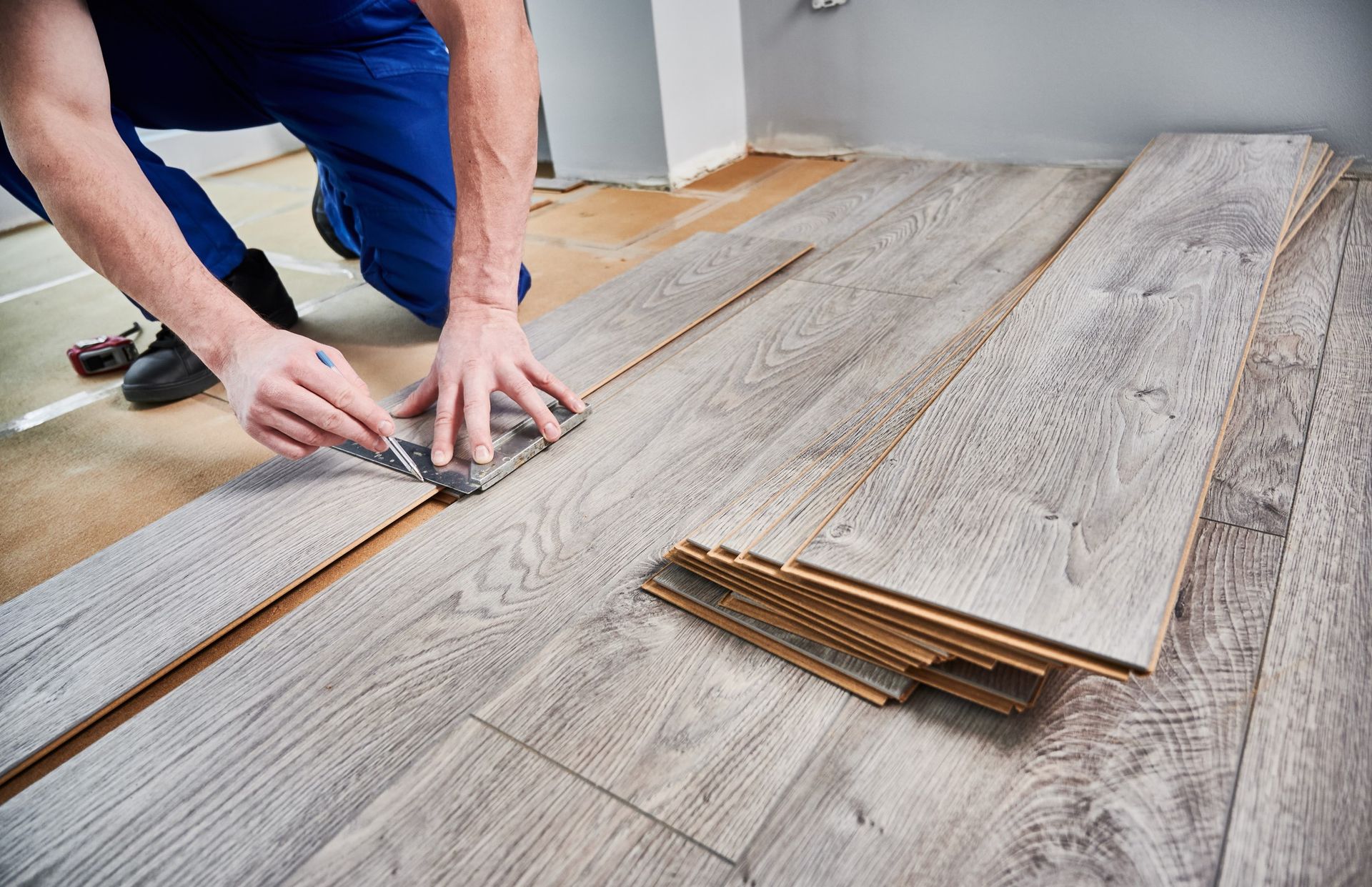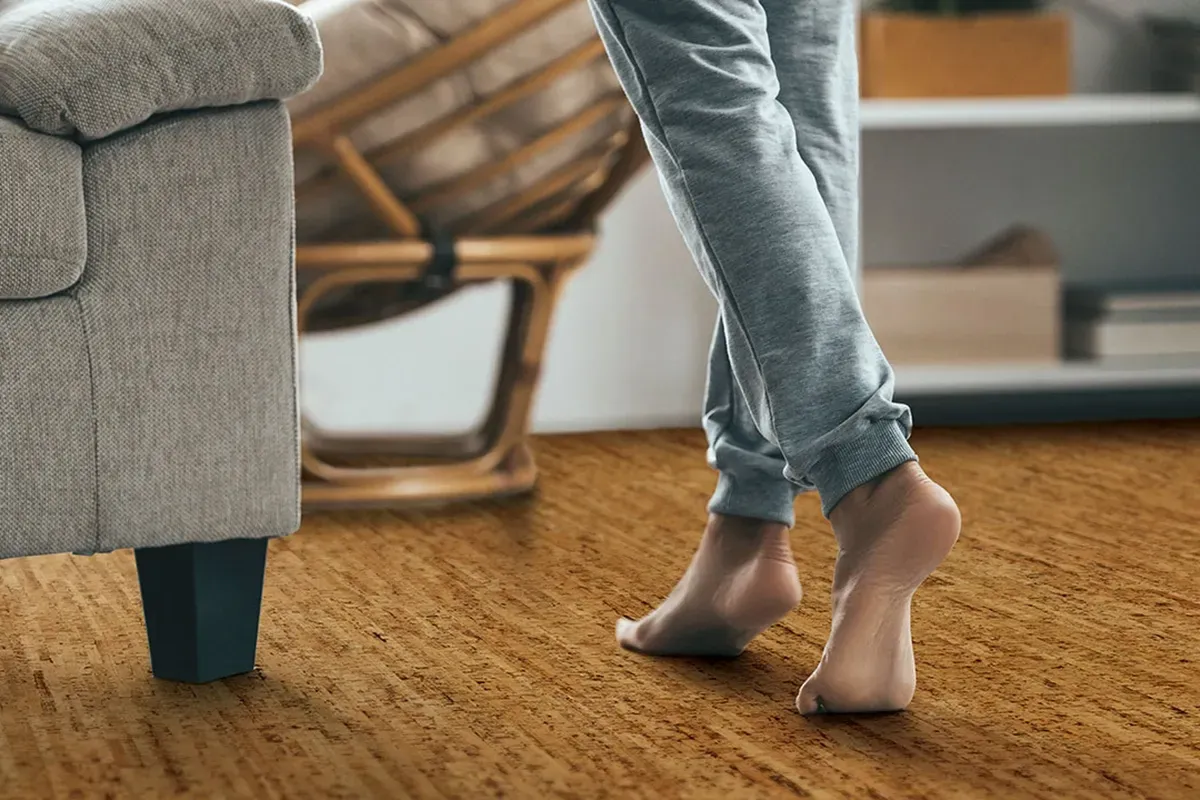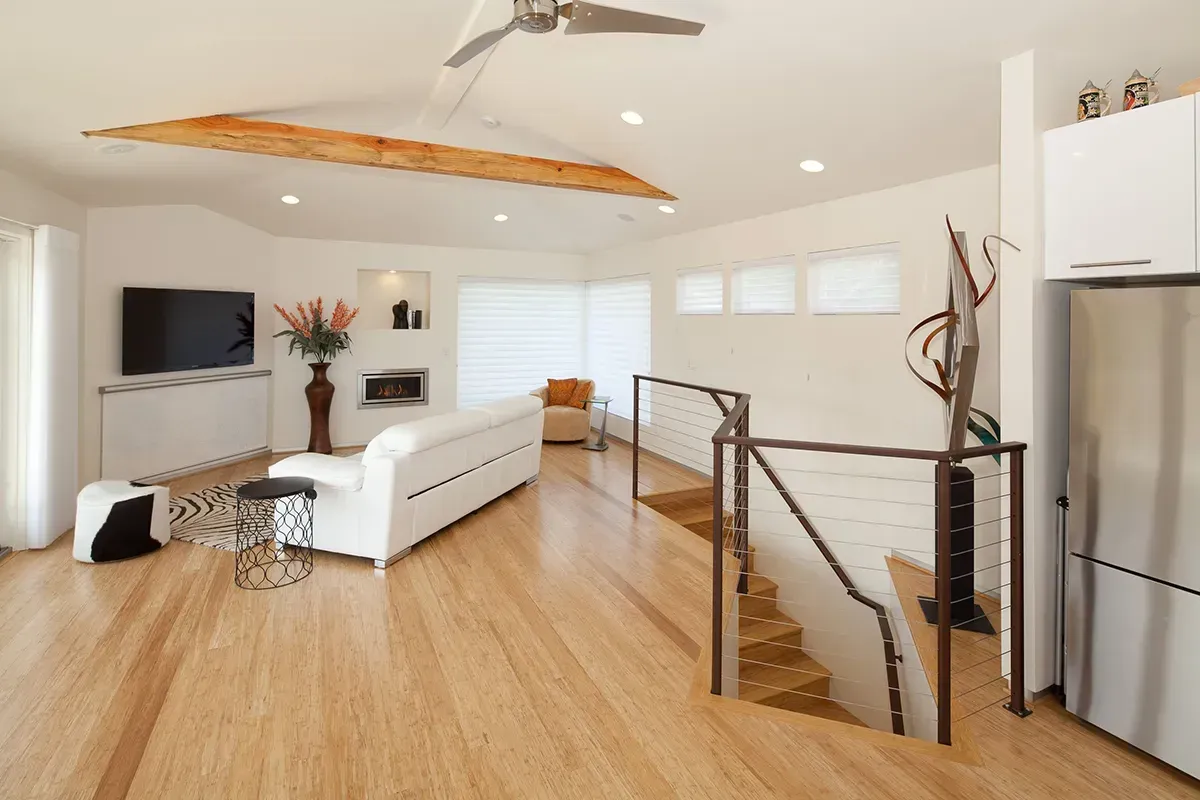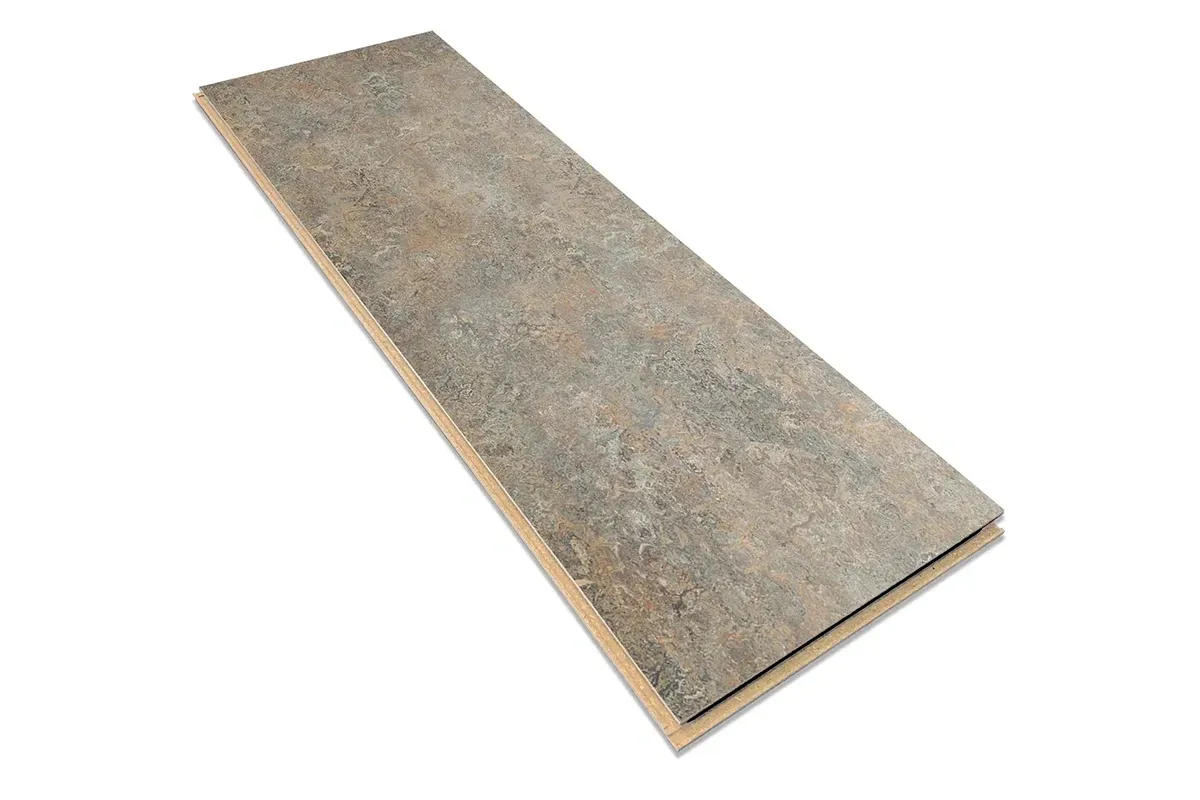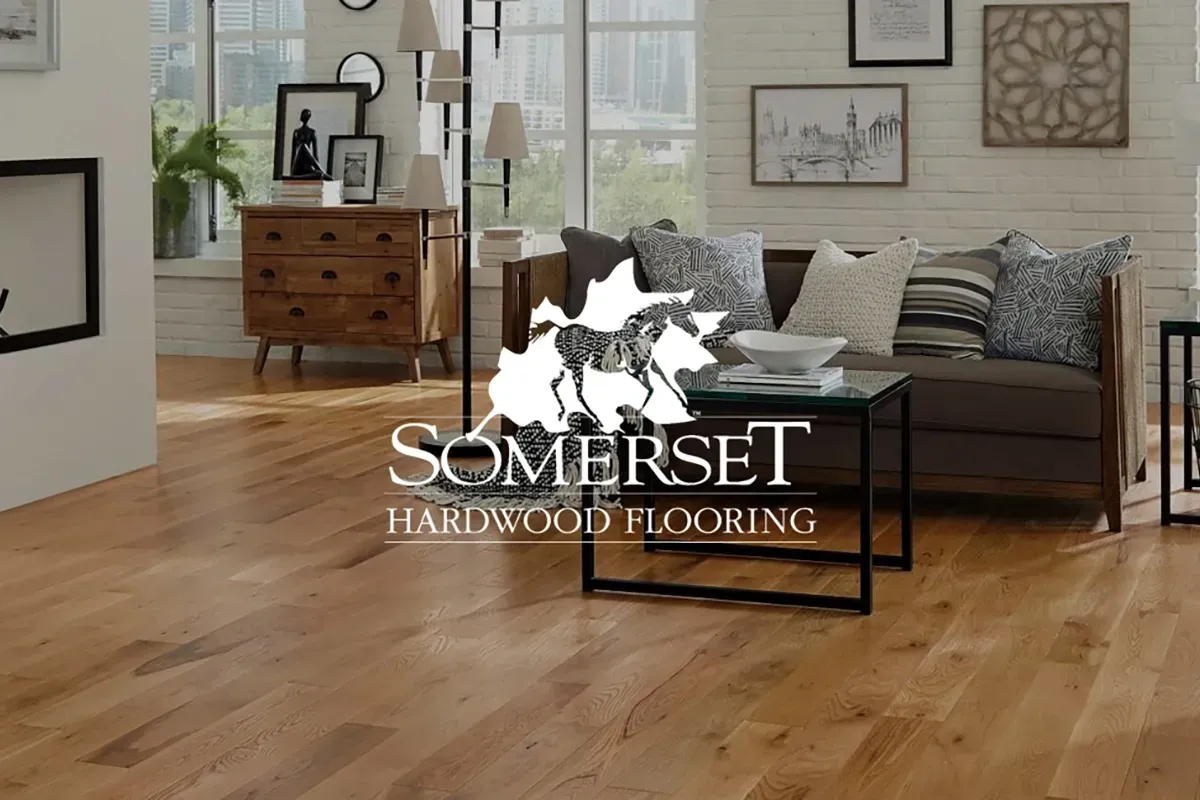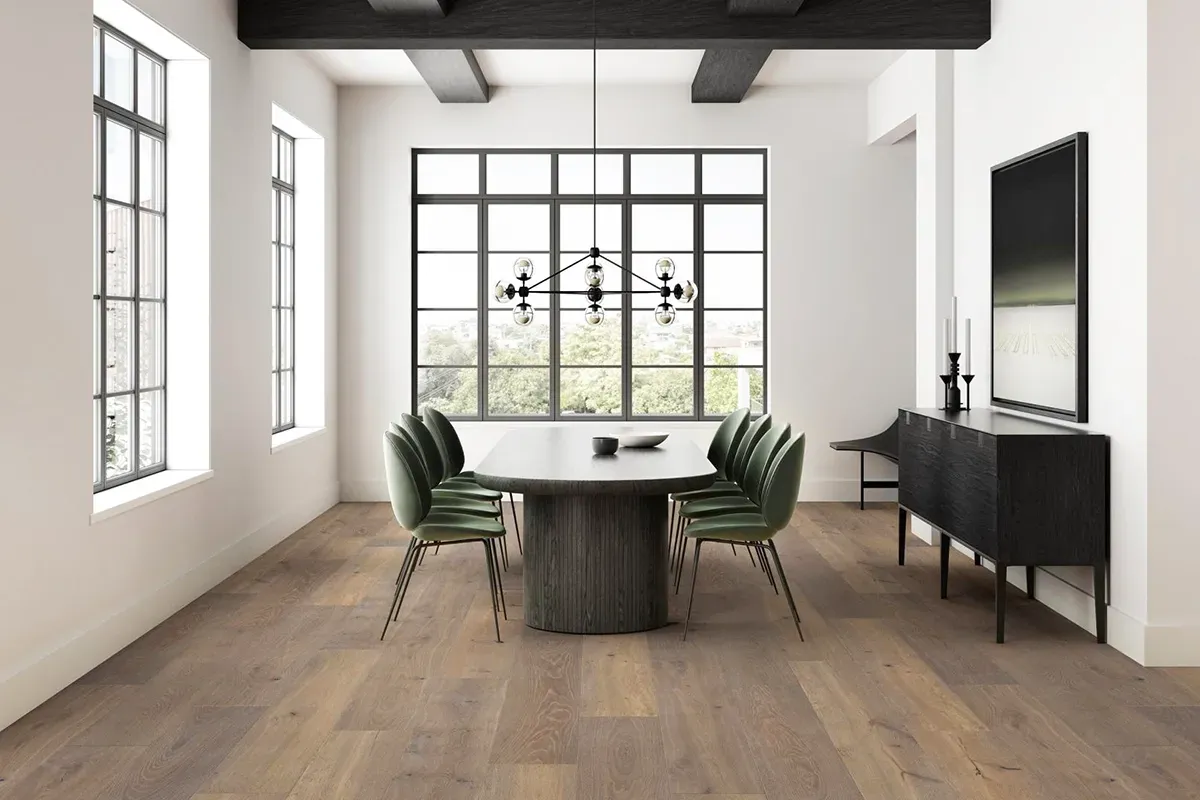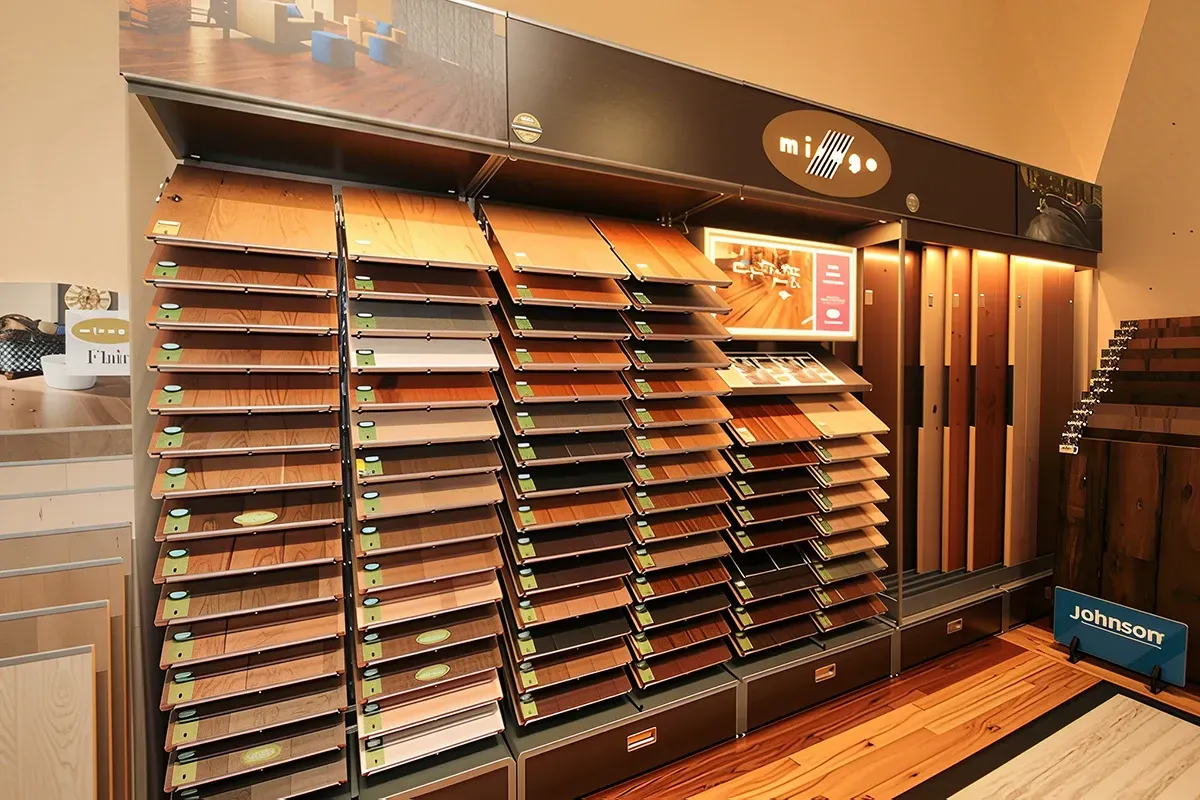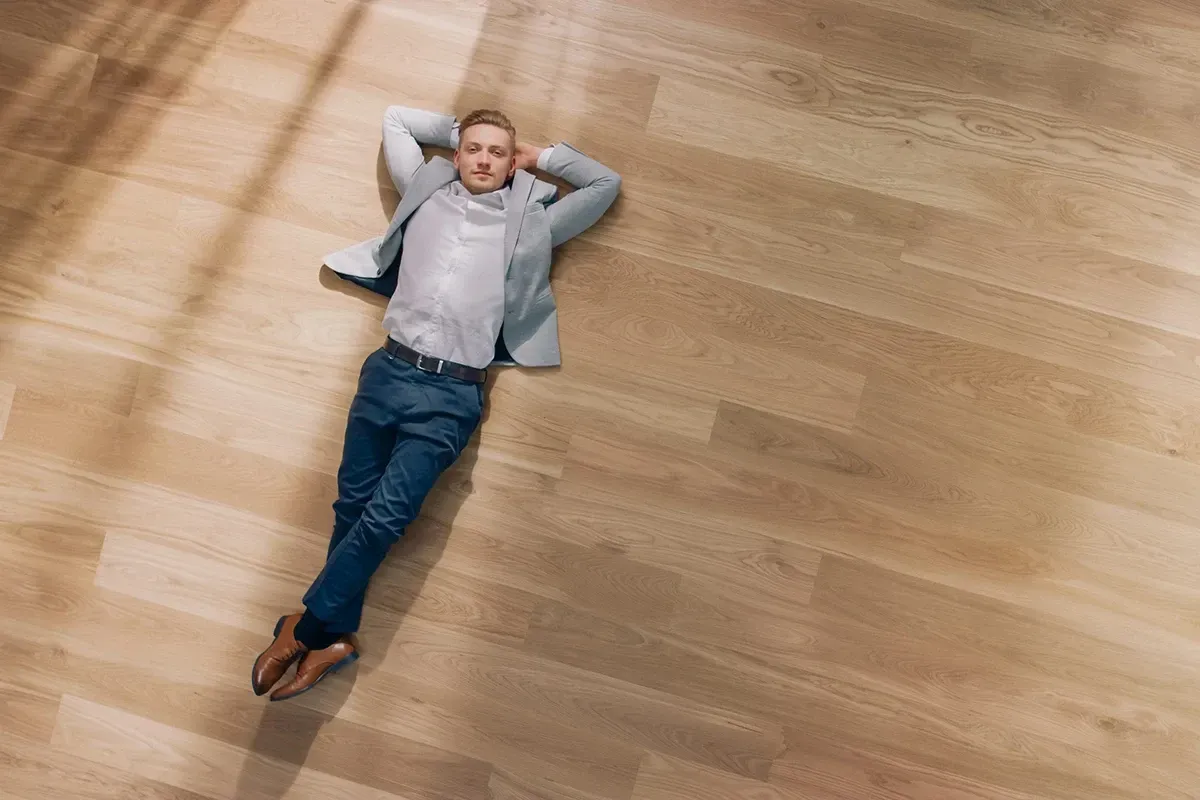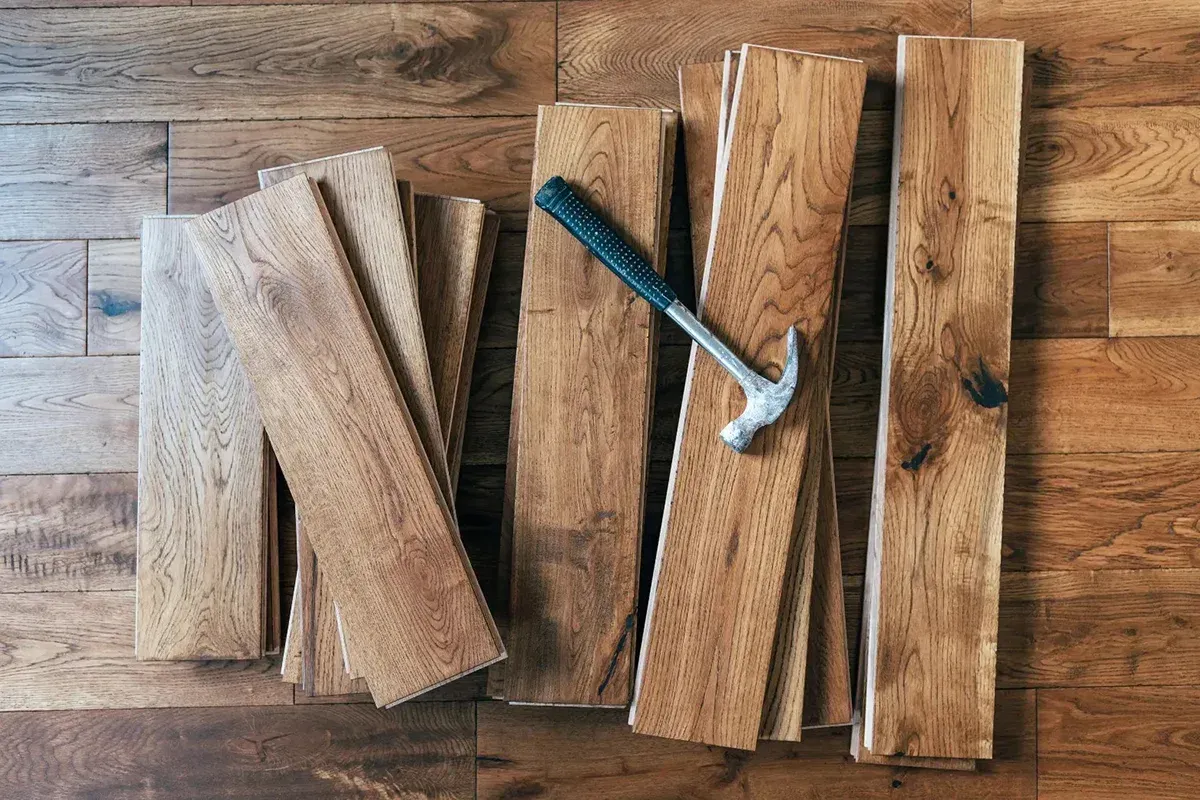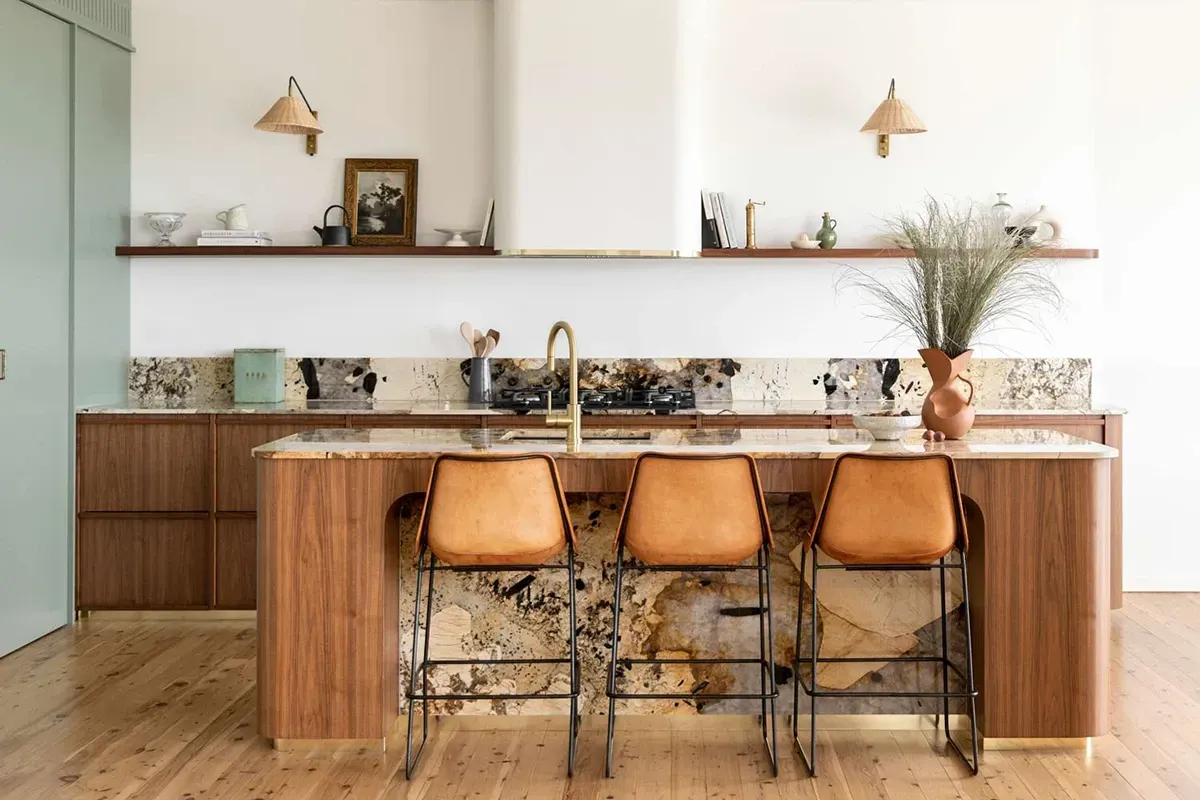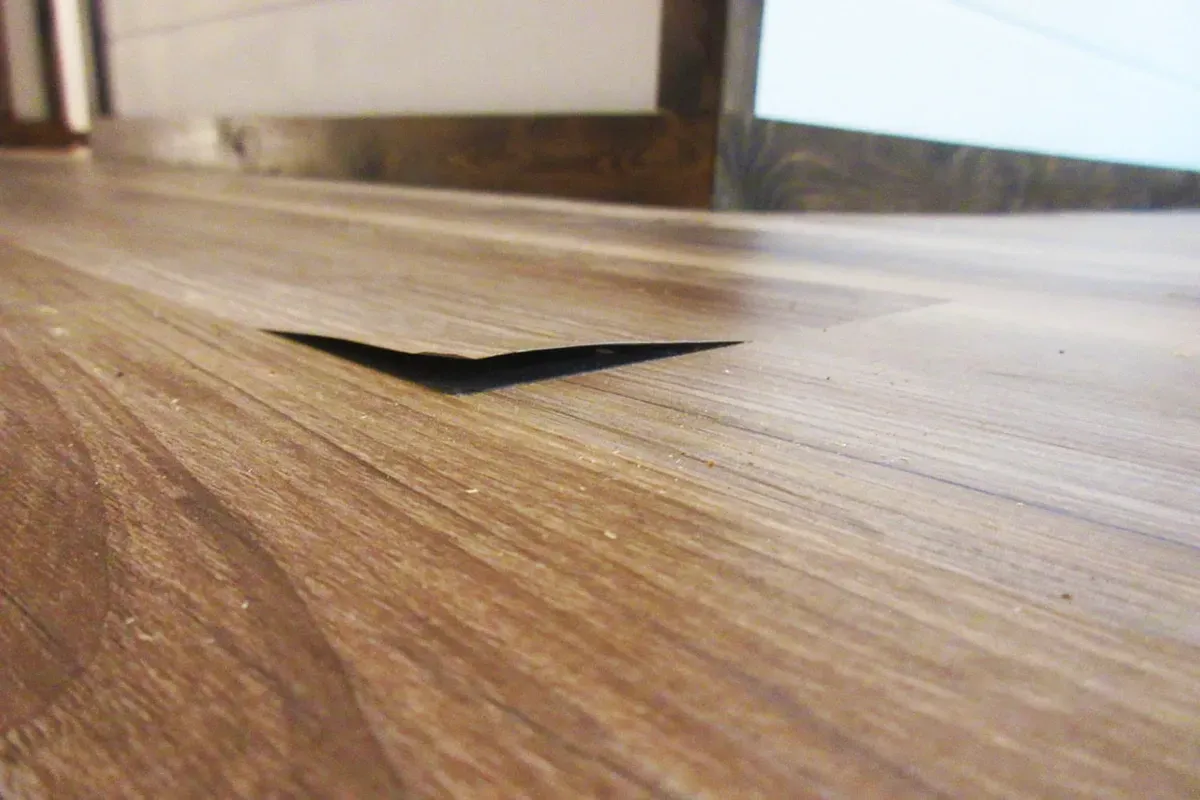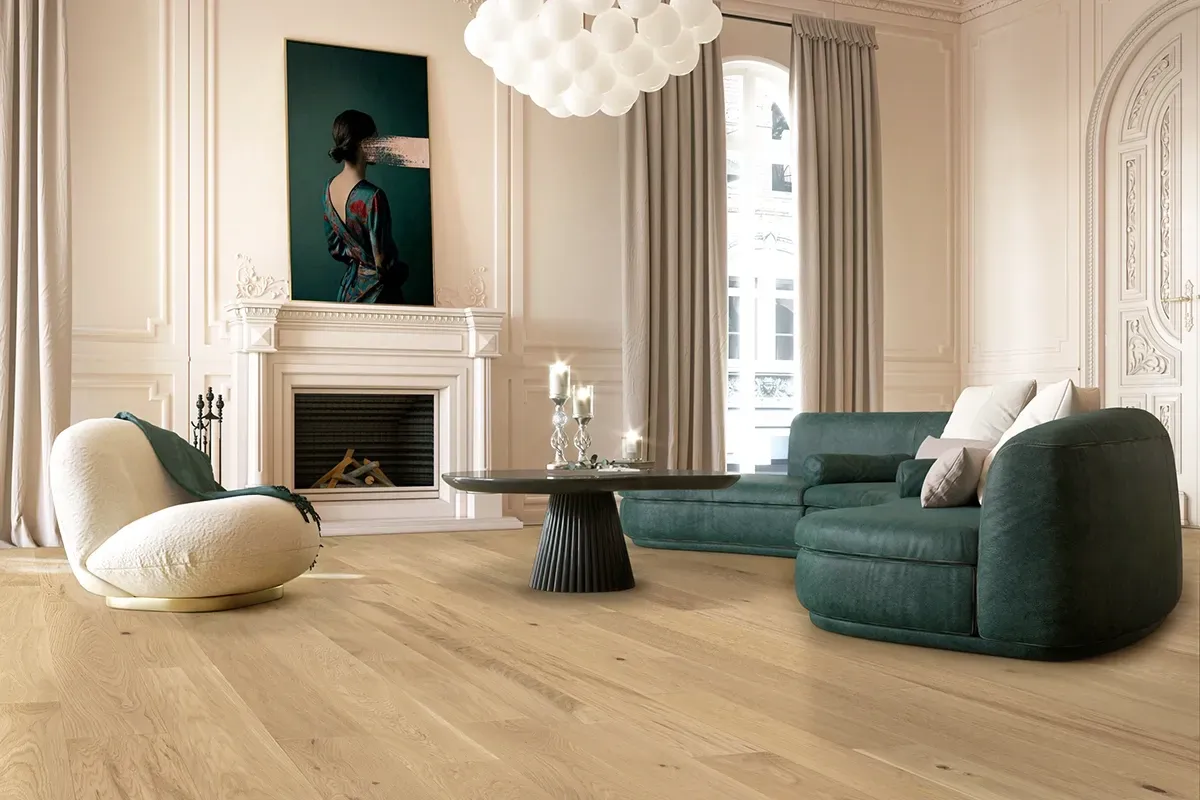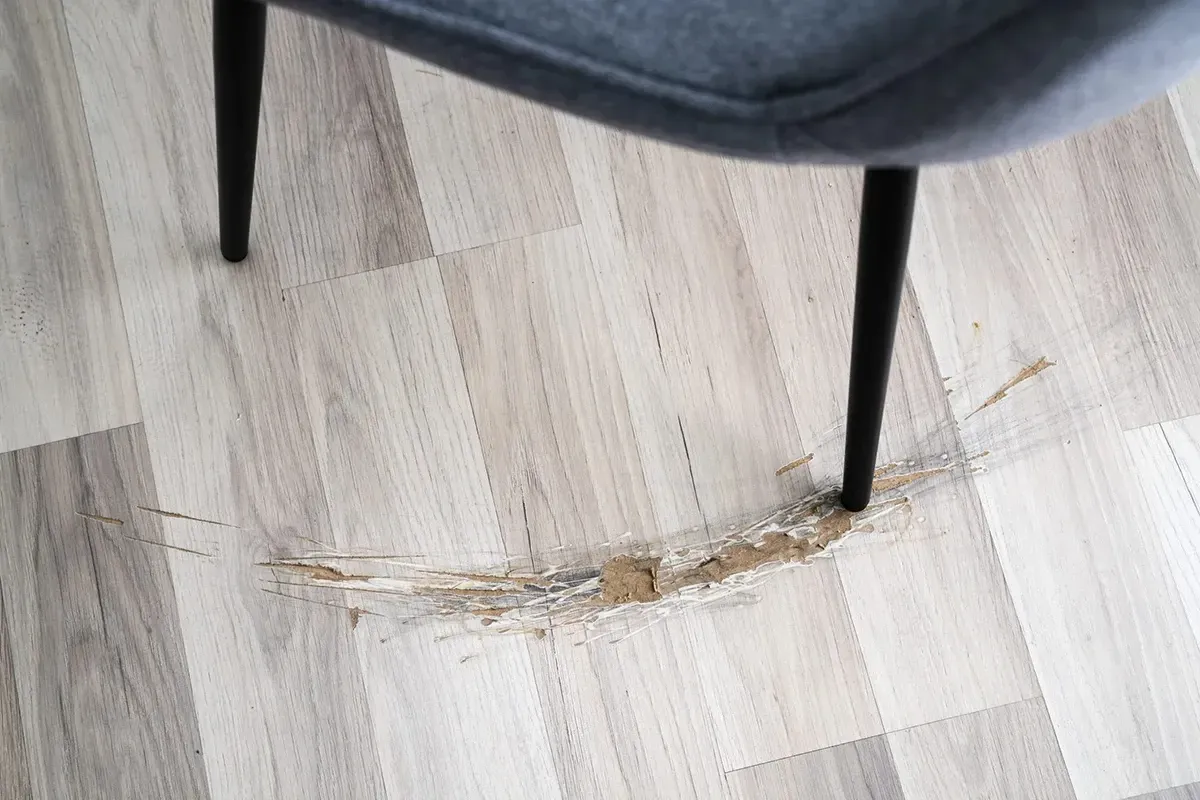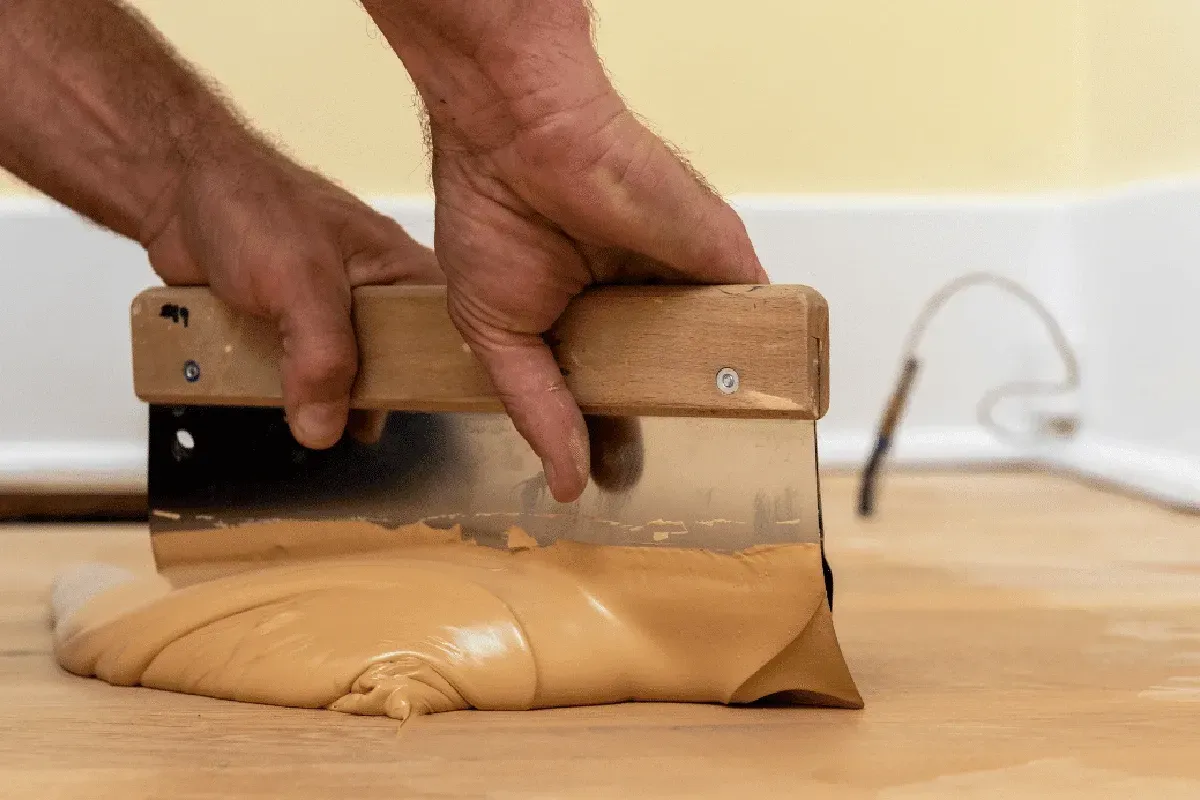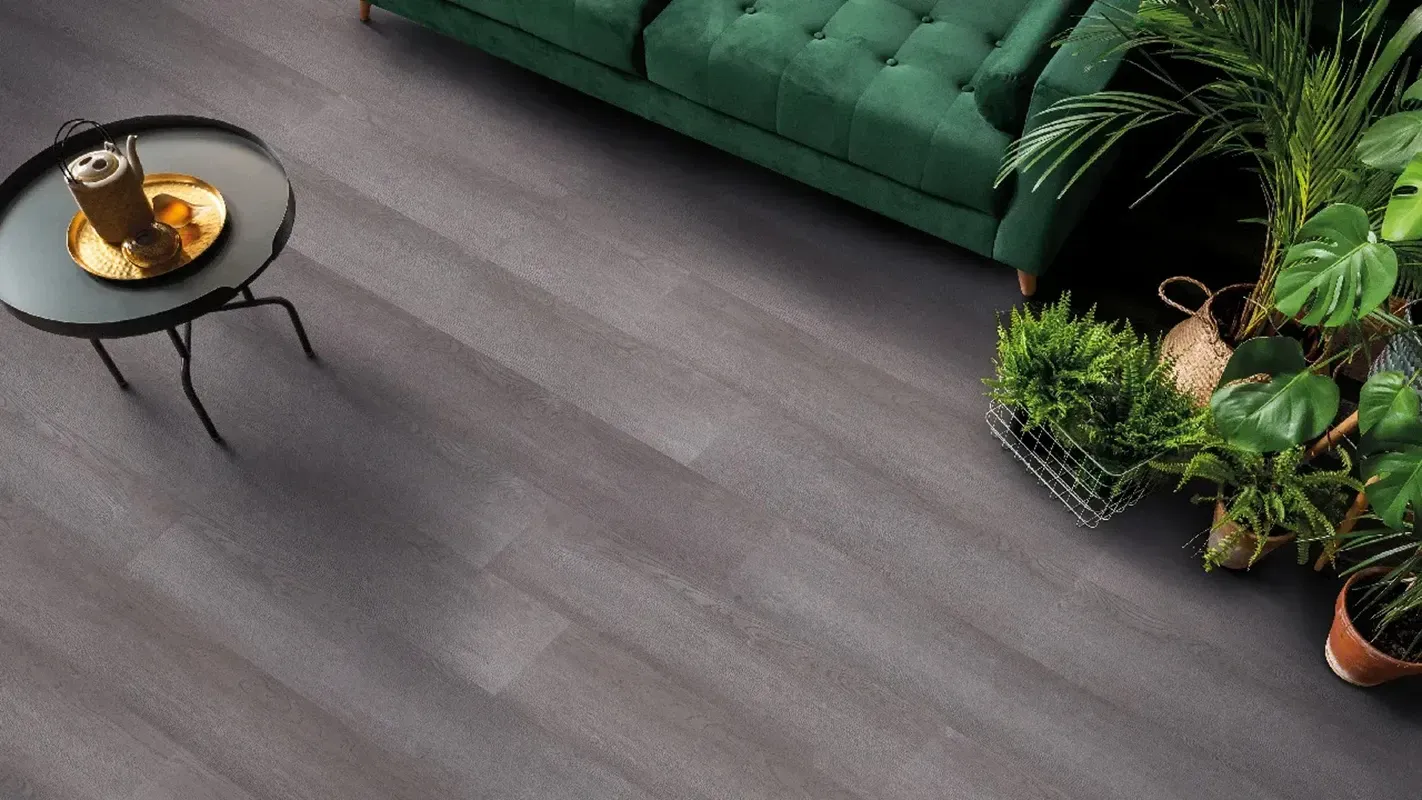How to Fix Squeaky Floors: 7 Methods That Work

Squeaky floors can be an irritating nuisance, but the good news is that they’re often easy to fix. Whether your floors creak due to surface friction, loose boards, or shifting joists, there are several effective solutions to eliminate the noise. From quick fixes like powdered graphite to more permanent solutions like securing floorboards with screws, this guide will help you identify the causes and help you choose how to fix squeaky floors in your home or apartment.
Before you Begin
Before deciding on how to fix your squeaky floors, pinpoint the exact location of the squeak by walking around and noting where the noise is loudest. This essential first step determines how to proceed. Another key consideration is whether you have access from above, or below, but we'll get to that in a moment. Always keep in mind that material manufacturers have warranties that may preclude you from performing some of the tips provided in this article.
Pro Tip: Have someone step on the squeaky area while you listen from below (if you have a basement or crawl space).
When to Call a Professional
We'll save you some time. While many squeaky floor issues can be resolved with DIY methods, some cases require professional expertise.
You should seek professional help if:
- The squeaking affects large areas
- The floorboards move significantly
- There is visible damage to the subfloor or joints
At Rejuvenation Floor and Design, a leading floor store in Portland, Oregon, we specialize in flooring repair, and installation. If you're dealing with persistent squeaks, our team can assess the issue and provide a long-term solution.
7 Ways to Fix Squeaky Floors
Below, we outline various methods, from quick fixes like applying powdered lubricants to more advanced solutions such as securing subfloors and reinforcing joists. Let's get started!
1. Apply Powdered Graphite or Talcum Powder (For Surface-Level Squeaks)
One of the easiest fixes is lubricating the wood planks to reduce friction.
How to Do It:
- Sprinkle powdered graphite, baby powder, or talcum powder over the squeaky area.
- Use a soft brush to work the powder into the cracks.
- Walk over the area several times to distribute the powder.
- Wipe off excess with a dry cloth.
Best For: Minor squeaks caused by surface friction.
2. Tighten Loose Floorboards with Wood Screws (For Gaps Between Floor & Subfloor)
If a squeaky wood floor is caused by a gap between the hardwood and subfloor, securing them together can eliminate noise.
Steps:
- Use 1 ¼-inch wood screws (long enough to secure the floor but not too long to pierce through).
- Drill a pilot hole at an angle to avoid splitting the wood.
- Drive the screw into the subfloor, securing the loose board.
- Fill the hole with wood filler that matches your floor color.
Best For: Squeaky wood floors due to subfloor separation.
3. Use Wood Shims to Stabilize Joists (For Squeaks from Below)
If your squeaky flooring is caused by an uneven subfloor or loose joists, adding wood shims can help.
How to Do It:
- Go underneath the floor (via a basement or crawl space).
- Look for gaps between the subfloor and floor joists.
- Gently tap a thin wood shim into the gap to stabilize it.
- Apply wood glue to hold it in place.
Best For: Squeaky floors caused by loose or shifting joists.
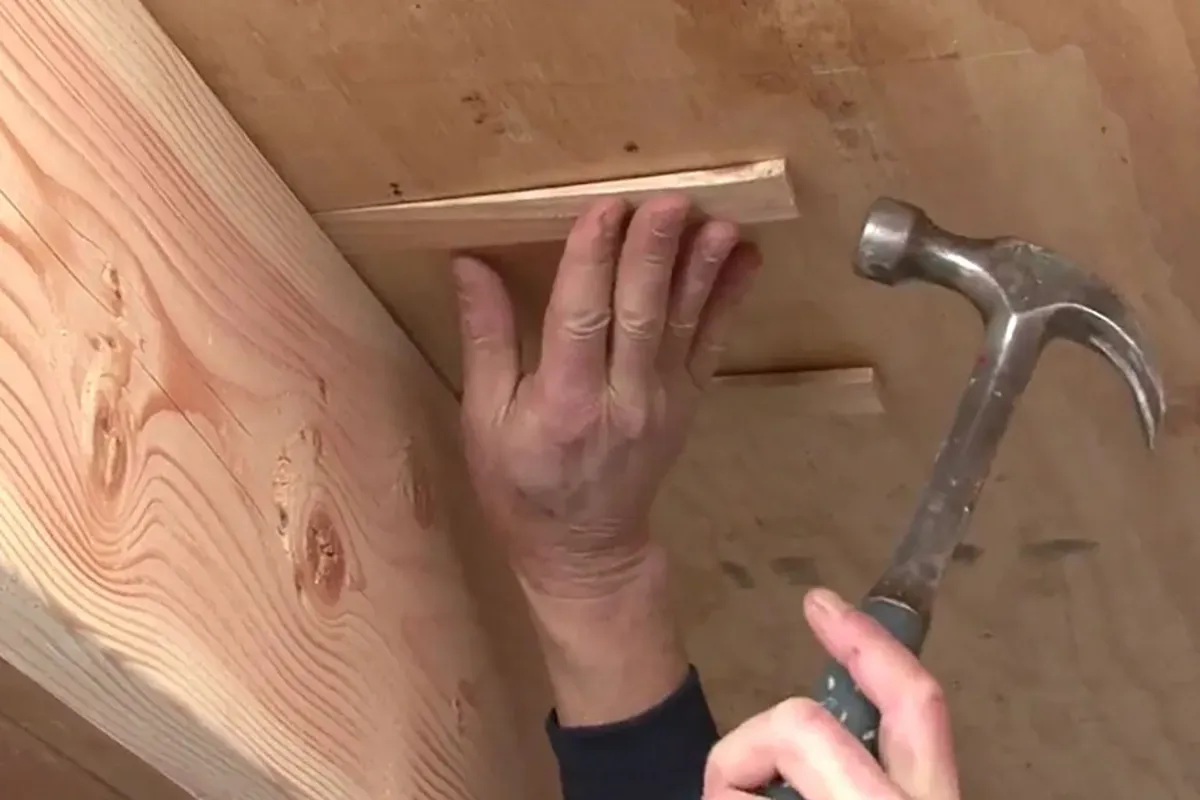
4. Refasten the Floor with Finish Nails (For Small Loose Planks)
If floorboards are slightly loose, securing them with finish nails can minimize movement.
Steps:
- Locate the floor joists by knocking on the floor (joists will sound solid).
- Drill a small pilot hole through the squeaky floor board.
- Hammer in a finish nail and sink it slightly below the surface.
- Fill the hole with matching wood putty and buff for a smooth finish.
Best For: Squeaky wood floor spots caused by small, loose boards.
5. Install Floor Screws from Below
For floors above a basement or crawl space, special squeak-eliminating screws can secure loose planks without visible damage.
How to Do It:
- Use specialty flooring screws (like "Squeeeeek-No-More" screws).
- Drill screws into the subfloor from below, securing the hardwood to the joists.
Best For: Homes with accessible basement or crawl space areas.
6. Add Support Braces for Joists
If floor joists have shifted or warped over time, reinforcing them with brackets or cross-bracing can prevent movement.
How to Do It:
- Measure the gap between loose joists.
- Install L-brackets or wood bracing for extra support.
Best For: Older homes with shifting joists.
7. Refinish the Floors for a Complete Squeaky Floor Fix
If your hardwood flooring has widespread squeaks due to age or wear, hardwood floor refinishing may be the best long-term solution.
Process:
- Sand down the existing finish.
- Secure any loose planks before refinishing.
- Apply a fresh polyurethane coating for added protection.
Best For: Floors with multiple squeaky areas and surface wear.
FAQ
Are squeaky floors a structural problem?
Squeaky floors are usually not a structural problem but rather a result of wood movement, loose fasteners, or friction between floorboards. While they can be annoying, they rarely indicate serious damage unless accompanied by sagging or visible deterioration.
How to fix squeaky wood floors from above?
To fix squeaky wood floors from above, identify the loose boards causing the noise. Drive trim screws into the subfloor and joists to secure them, or apply talcum powder or a lubricant like powdered graphite between boards to reduce friction.
How to fix squeaky floors from below?
If you have access to the floor from below, reinforce it by securing the subfloor to the joists with screws or adding shims where there are gaps. Lubricating or cushioning areas of movement with adhesive or wood blocks can also help eliminate squeaks.
How to fix squeaky floors under carpet?
To fix squeaky floors under carpet, locate the squeak by stepping on the affected area. Use specialized squeak repair kits with breakaway screws that can be driven through the carpet into the subfloor. Alternatively, inserting shims or applying construction adhesive between the subfloor and joists can help.
How to fix squeaky floors upstairs?
Fixing squeaky floors upstairs involves either tightening the floor from above using screws or lubricants or reinforcing it from below if you have access to the ceiling below. Carpeted areas may require special repair kits designed for subfloor reinforcement.
Can humidity cause squeaky floors?
Yes, the effects of humidity on hardwood flooring can cause wood to expand and contract, leading to gaps and squeaks. Maintaining consistent indoor humidity levels can help prevent this.
WD-40 for squeaky floors?
Ah, the good ol' American fix. While WD-40 can provide a temporary fix for squeaky floors by lubricating wood joints, it’s not the best long-term solution. It may attract dust and dirt, potentially worsening the problem over time. A dry lubricant like powdered graphite is a better alternative.
Do squeaky floors go away on their own?
No, squeaky floors usually don’t resolve themselves. They often worsen over time as wood continues to shift or fasteners loosen further.
Who to hire to fix squeaky floors?
A flooring contractor, handyman, or carpenter can fix squeaky floors. If the problem is severe, such as subfloor damage or structural concerns, a general contractor may be needed.
How much does it cost to fix squeaky floors?
The cost to fix squeaky floors varies based on the extent of the issue. DIY solutions can cost as little as $20–$50, while professional repairs typically range from $150 to $500. Extensive subfloor work or joist reinforcement may cost significantly more.
Are new wood floors supposed to squeak?
New wood floors may squeak temporarily as they settle, especially in dry conditions. If squeaking persists, it may indicate improper installation or fasteners that need securing.
Can a rug help reduce squeaky floors?
Yes, placing a thick rug over a squeaky area can help dampen noise by reducing foot traffic impact, though it won’t fix the underlying issue.
Preventing Squeaky Floors in the Future
- Control Humidity Levels: Use a humidifier in winter and a dehumidifier in summer to prevent wood from expanding and contracting.
- Use Proper Flooring Underlayment: A high-quality underlayment can absorb sound and reduce movement.
- Secure Furniture Pads: Heavy furniture shifting can loosen planks over time.
- Regular Floor Maintenance: Inspect and tighten loose boards as soon as you notice them.
Final Thoughts
Squeaky floors can be annoying, but they don’t have to be permanent. Whether you choose a quick DIY fix like talcum powder or a long-term solution like securing the joists, there’s a method for every type of squeak flooring. If you're unsure how to fix a squeaky floor, contact Rejuvenation Floor and Design for expert advice and professional repairs.

